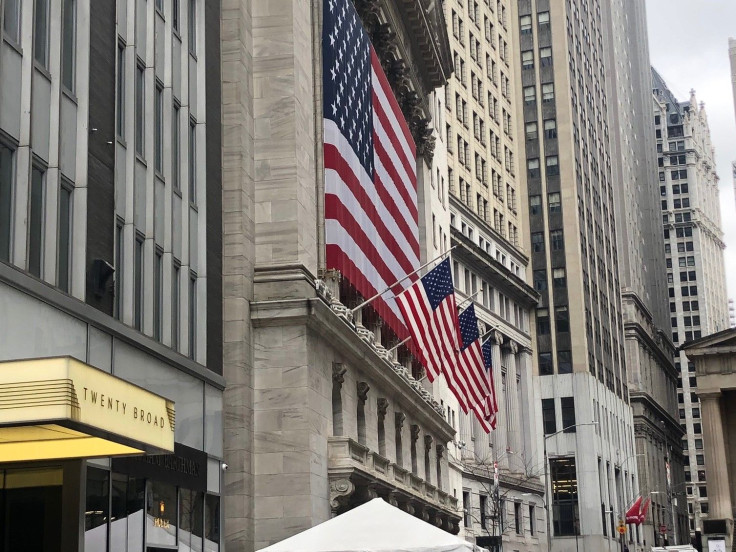Thursday's Stock Market Close: US Equities Rise As New Fed Lending Scheme Outweighs Jobless Claims Data

KEY POINTS
- Some 6.6 million Americans filed for unemployment last week
- Federal Reserve unveiled a huge new $2.3 trillion lending program
- Treasury Secretary Steven Mnuchin said the U.S. economy could re-open in May
U.S. stocks climbed on Thursday as the Federal Reserve unveiled a huge new lending program, while millions of Americans filed for unemployment last week due to the coronavirus-related shutdown
The Dow Jones Industrial Average gained 285.8 points to 23,719.37, while the S&P 500 rose 39.84 points to 2,789.82 and the Nasdaq Composite Index advanced 62.67 points to 8,153.58.
For the holiday-shortened week, the Dow jumped 12.67%. The New York Stock Exchange will be closed on Good Friday.
Thursday’s volume on the New York Stock Exchange totaled 6.98 billion shares with 2,581 issues advancing, 11 setting new highs, and 419 declining, with two setting new lows.
Active movers were led by Ford Motor (F), Carnival Corp. (CCL) and General Electric (GE).
The Labor Department said on Thursday that 6.6 million Americans filed first-time unemployment claims for the week ended Apr. 4. Over the past three weeks, more than 16 million have filed.
However, the most recent number is below the revised figure from last week of nearly 6.9 million.
The Federal Reserve unveiled details of a $2.3 trillion Main Street lending program which would provide loans for business with up to 10,000 employees and $2.5 billion in revenue.
“This Fed is the most aggressive Fed. They do not want to be known as the reason why we went into a depression,” said CNBC’s Jim Cramer. “I’m very impressed. The Fed is on its game and this is what is needed because we got to fight off a depression, we got to get America open for business.”
Treasury Secretary Steven Mnuchin also told CNBC the U.S. economy could re-open in May.
But analysts are very concerned about swelling unemployment.
“In the first wave [of filings] you saw the first hit was to service workers,” said Diane Swonk, chief economist at Grant Thornton just prior to the release of the latest data. “Leisure was really large, but retail is going to be big in the next wave ... all the hundreds of thousands of retailers put workers on furlough. You’re going to see more and more broad-based layoffs -- temporary as well as long-term layoffs. The further we get into April, the more we’re going to get beyond hourly workers to salaried workers. What we’ve laid bare is no system was meant to process the kinds of claims we’re dealing with. No one expected this kind of volume, and the systems are antiquated.”
Russia and Saudi Arabia agreed to oil production cuts.
“It’s been a strong week in equities and probably for good reason,” said Terry Sandven, chief equity strategist at U.S. Bank Wealth Management. “Many stocks were widely considered to be in oversold, and then you’ve got policy assistance that’s in motion at the Fed and in fiscal policy. That’s clearly helping sentiment, but we still find it difficult to get overly bullish when the duration of COVID-19 remains unknown.”
Overnight in Asia, markets were mixed. China’s Shanghai Composite rose 0.37%, while Hong Kong’s Hang Seng gained 1.38%, and Japan’s Nikkei-225 slipped 0.04%.
In Europe markets closed higher, as Britain’s FTSE-100 rose 2.9%, France’s CAC-40 advanced 1.44% and Germany’s DAX gained 2.24%.
Crude oil futures dropped 5.62% at $23.68 per barrel, Brent crude rose 2.16% at $32.16. Gold futures gained 2.91%.
The euro rose 0.73% at $1.0937 while the pound sterling gained 0.7% at $1.2471.
The yield on the 10-year Treasury dropped 4.58% to 0.729% while yield on the 30-year Treasury slipped 0.81% to 1.353%.
© Copyright IBTimes 2025. All rights reserved.





















